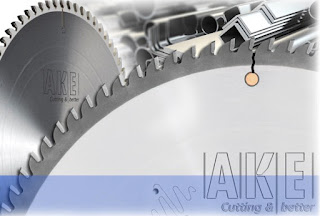How to Cut Aluminium with a Circular Saw: A Comprehensive Guide
 |
| Saw Mill Saw Blades |
Aluminium is a versatile and widely used
metal known for its lightweight, corrosion-resistant, and durable properties.
Whether you're a DIY enthusiast or a professional in the construction or
fabrication industry, there might come a time when you need to cut aluminium
sheets, pipes, or profiles. One of the most efficient tools for this task is a
circular saw. In this guide, we'll walk you through the steps of cutting aluminium with a circular saw, referencing insights from The Piping Mart's
informative article on the subject.
1. Gather Your Materials and Safety Gear:
Before diving into the cutting process, ensure you have all the necessary
materials and safety equipment. You'll need:
·
Circular saw with a
carbide-tipped aluminium cutting blade
·
Aluminium material to be cut
·
Safety glasses
·
Hearing protection
·
Dust mask
·
Clamps or a vise to secure the
aluminium piece
·
Measuring tools (ruler, square,
etc.)
·
Pencil or marker
2. Choose the Right Blade: Selecting the
correct blade is crucial for achieving clean and precise cuts. Opt for a
carbide-tipped blade specifically designed for cutting aluminium. The teeth on
these blades are designed to prevent clogging and to ensure smooth cutting
through the metal.
3. Secure the Aluminium: Before you start
cutting, it's essential to secure the aluminium piece properly. Use clamps or a
vise to keep the material stable throughout the cutting process. This minimises
vibrations and helps you maintain better control over the saw.
4. Mark Your Cutting Line: Measure and mark
the cutting line on the aluminium using a ruler, square, or any other
appropriate measuring tool. Double-check your measurements to ensure accuracy,
as precision is key to obtaining the desired outcome.
5. Adjust Saw Settings: Before you begin
cutting, set your circular saw's depth to ensure that the blade will cut
through the aluminium without excessive overcutting. Adjust the depth by
loosening the depth adjustment lever, moving the base plate up or down, and
then tightening the lever once the desired depth is reached.
6. Put on Safety Gear: Safety should be a
top priority. Put on your safety glasses, hearing protection, and a dust mask
to shield yourself from potential hazards and debris generated during the
cutting process.
7. Begin Cutting: Position the circular sawblade just outside the marked cutting line and start the saw. Allow the blade
to reach its full speed before making contact with the aluminium. Gently guide
the saw along the marked line, using a slow and steady motion. Avoid forcing
the blade or rushing the process, as this could lead to inaccurate cuts or
potential accidents.
8. Minimise Heat Buildup: Cutting aluminium
generates heat, which can cause the metal to stick to the blade and affect the
quality of the cut. To prevent this, you can apply a lubricant or cutting fluid
to the blade before cutting. This will help reduce friction and heat buildup,
resulting in smoother cuts.
9. Maintain Control and Pressure: As you
guide the circular saw along the cutting line, maintain a firm grip on the tool
and apply consistent pressure. Avoid pushing the saw too hard; let the blade's
cutting speed and teeth do the work for you.
10. Finish the Cut: Continue cutting along
the marked line until you've completed the entire cut. Once the cut is
finished, release the trigger and wait for the blade to come to a complete stop
before lifting the saw away from the aluminium.
 |
| Aluminum Saw Products |
Conclusion
Cutting aluminium with a circular saw can
be a straightforward process if you follow the right steps and prioritise
safety. From selecting the right blade to securing the material and executing
the cut, each step contributes to achieving accurate and clean results. By
following the guidance provided in this guide and referencing valuable insights
from The Piping Mart's article, you'll be well-equipped to tackle aluminium
cutting projects with confidence and skill. Always remember to prioritise
safety and take your time to ensure precise cuts that meet your project's
requirements.



Comments
Post a Comment